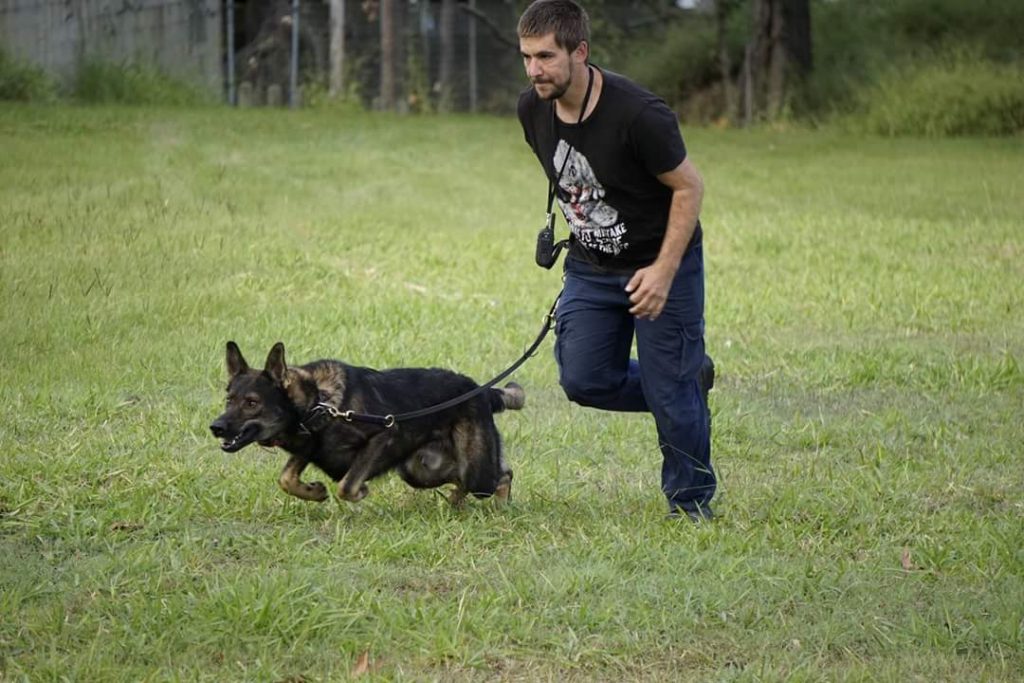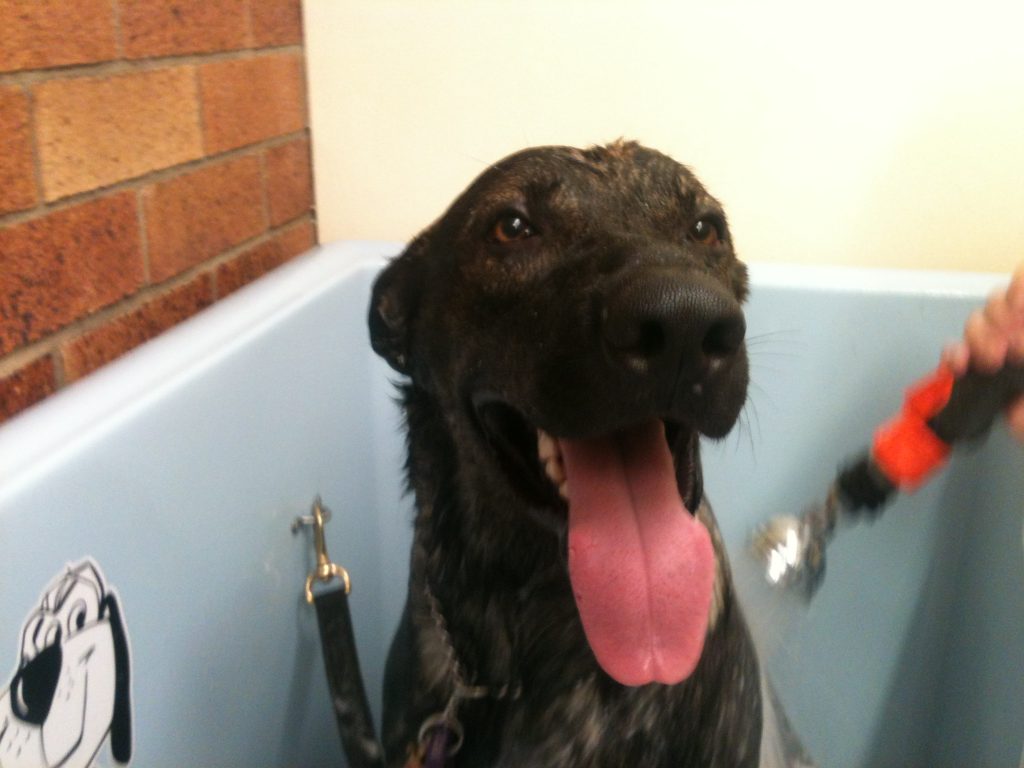
Police and Security Officers are familiar with the Use of Force Continuum. There are some critics of the utility of the Use of Force Continuum. The argument against it is that it encourages officers to utilise a higher level of force than necessary because it’s often taught as a gradient. i.e. start low and end high. However, I find that is a result of poor training and understanding of the continuum. The Use of Force Continuum doesn’t require you to only escalate, if your attacker brings their level of aggression down, you can bring your level down too. The advantage of the continuum is it gives you a framework for making decisions in the heat of the moment and a common language that is often taught to jurors so that you can justify your actions later.
The levels of Force Continuum are below.
- Presence – The presence of your dog is the first level of the Force Continuum. The goal here is that simply having your dog next to you prevents an attack.
- Verbal – Your warnings towards a threat and the dogs barking are the Verbal level. The idea here is that you can deter or negotiate your way out of an attack before using force.
- Open Hand – This could be pushing a person out of your space or having your dog lunge to the end of their lead to create space. If you don’t have a dog, you have more options in this space. However, controlling a dog takes up one of your hands.
- Closed Hand – This is when you start punching, kicking, and your dog muzzle strikes.
- Weapons – Some versions of the Force Continuum distinguish between “non-lethal” and “lethal” weapons. I think this is problematic because all weapons have the potential to be lethal. Dog Bites fall into the category of weapons and can potentially be lethal as they are causing grievous bodily harm.
It’s important for everyone to be aware of this continuum and to think about your actions during a conflict and your defence afterwards. Because even if you’re attacked and defend yourself, you may have to justify your actions to a court. Failure to justify your actions could result in legal and civil penalties and the destruction of your dog.
I am absolutely not a legal expert. I’ve read the Queensland Criminal Code and had to attend multiple Use of Force training sessions as a Security Officer. One company I worked for asked their lawyers to determine appropriate uses of force for specific arbitrary situations and the advice from the lawyer made no tactical sense whatsoever. And that advice failed to take into account the Use of Force Continuum.
In my opinion, when faced with a threat your safety comes first legal ramifications come second. I’ve utilised this continuum successfully in my work as a security officer for over ten years. Using this continuum has allowed me to resolve most conflicts without violence and I’ve never been taken to court over any of my actions as a security officer. I am only aware of one case where a dog has bitten someone in a conflict situation that resulted in prosecution and I believe that was a civil case as the offender didn’t have enough for a criminal case against the handler.
We train ourselves and our dogs for the worst-case scenario so that we don’t experience that scenario. But our skills are subordinate to our tactics. We need to keep in mind how we enter and plan to end a conflict so that both our dogs and we are safe and free afterwards.
If you’d like to discuss protection dog training with me, contact me below.





